Don't wanna be here? Send us removal request.
Text
This is one of the main reasons they're the band of my life! (and Ruki is like a master of knowledge and spirituality for me, he's Incredible and genius!)💜🔯
Interpreting the symbolism of the GazettE - Through Darkness to Enlightenment

The DOGMA cover is unconscious imagery. The Priestess in the eye of the storm. The only colors used are the alchemical ones (black, white, gold, red).
In Jungian psychology and alchemy Nigredo or blackness refers to the initial stage of the alchemical process, symbolizing the darkness, chaos, and dissolution that precede transformation and rebirth. It represents a state where the individual confronts their shadow aspects, unconscious fears, and repressed emotions. This stage is characterized by a sense of disintegration and descent into the abyss - depths of the psyche, where the old self must die.
The Nesthead is blackened out to signify that we are entering this 1st stage of the alchemical process. However, she is The Priestess who will come out of this transformative process as signified by her 7 pointed star crown. She (the soul) is surrendering to the darkness, knowing that she is immortal. To quote Ruki in Dogma - "The rite I must face is cloaked in darkness and isolation - Only there will truth be found" . Her right hand is dissolving the repressed trauma and the left has a tight grip on the demons (Solve et Coagula).
Moving on to the next image - it is the The Redefinition Tour cover art from right before the Dogma era. The Goddess of Death. The darkness is Feminine, the creator and destroyer. She oversees the Dark Night of the Soul process as the ruler of the Underworld. She is Yin. She is Izanami in Shinto, although this image is left quite ambiguous and could easily be seen as a death goddess of any other religion.
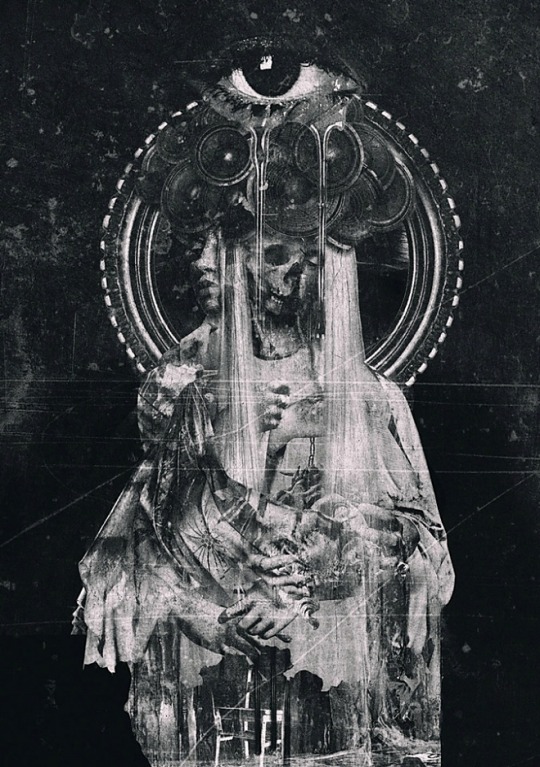
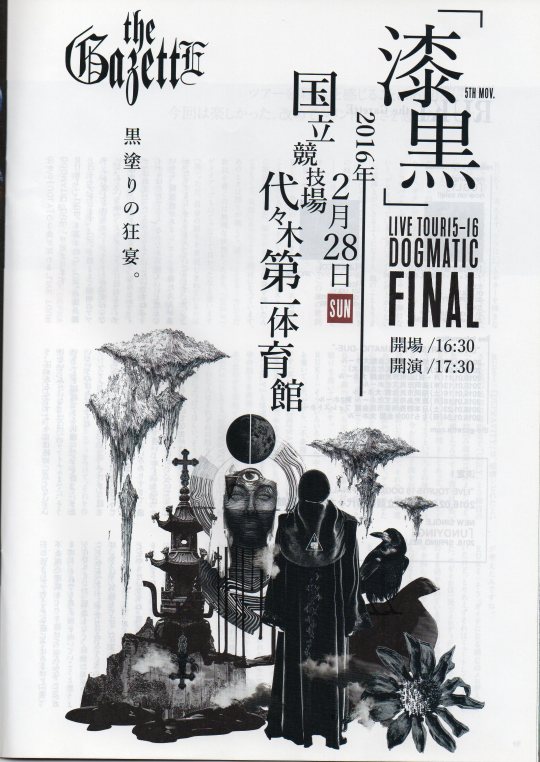
The Dogmatic Final poster. Skulls, crows, rot, decomposition and dying flowers all represent the alchemical Blackness stage. It is depression, isolation, pain, helplessness and despair. Choosing to embrace the Shadow - what is ugly, rotting, dying, unwanted and repressed. These are all common themes in Ruki's lyrics. A faceless priest represents the loss of identity while going through this sacred process. He serves as a mediator between God and the congregation. Ruki wore a priest's Stole throughout the whole Dogma era.
Dogma is the Dark Night of the Soul album. Heaviest sound, richest in symbolism. Ruki is both the priest conducting the purification and the one being purified.
Blemish lyrics: "I want to be reborn. Leave me alone. I had to stifle my cries when I caught sight of my own twisted shadow.[...]In darker dreams..(Help me) A goddess speaks to me.. and it seems.. (There’s no way).. I cannot see the light."
Let's analyze each symbol from the Dogma video separately:
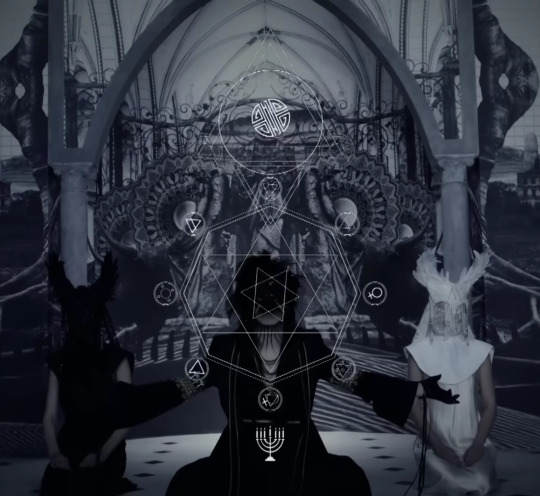
(1) - starting from the bottom the Menorah is a symbol of universal enlightenment. Going up from that we have alchemical sulfur (evaporation, expansion, and dissolution), then the 4 elemental symbols, then Venus signifying the Anima (Jungian term) on the right. Simplified version of Bhavachakra mandala (which they use again while performing Wasteland live in the Dogmatic tour final) on the left. The Hexagrams in the center represent unification of the opposites (Light and Shadow, Yin & Yang). The blacked out face is the dissolution of identity (ego).
The image as a whole is reminiscent of the High Priestess in tarot (the Qabalistic path of Gimel, ruled by the Moon, which is the only light in the Dark Night). The black Pillar of Severity and white Pillar of Mercy behind him.

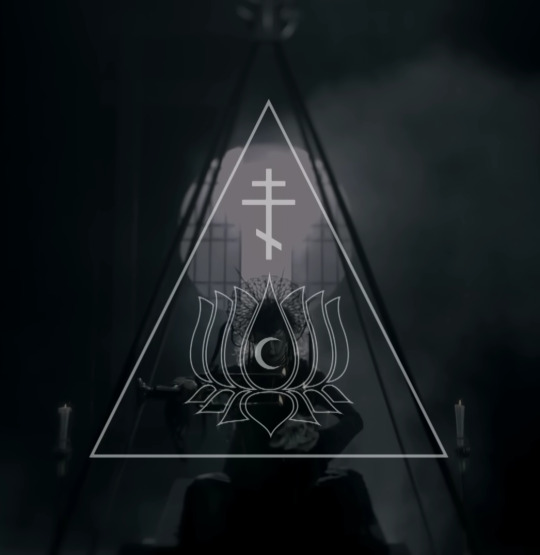
(2) - Light is Consciousness and Shadow is all that is repressed and unwanted. Unification of these opposites is the goal. Upside down triangle is Yin. I'm interpreting this as there can be no enlightenment with Greed. It matches well with the societal critiques Ruki often expresses with his lyrics.
(3) - In Buddhism there's a saying no mud - no lotus. It is a symbol of transmutation. The Moon is Albedo (whiteness)- the insights you gain when embracing and examining your Shadow. And the Orthodox cross at the top is a symbol of salvation and redemption in Christian mysticism. It represents the transformative power of Christ's (Sun) sacrifice and the possibility of spiritual rebirth and renewal for humanity. The vertical bar of the cross is sometimes interpreted as the axis mundi, or cosmic axis, which connects the earthly realm with the divine realm. It is the path of ascent from the material world to the spiritual world.

(4) - Is again the hexagram but with the Leviathan Cross in the center, which is another symbol for sulfur. Interestingly, it is put over the censer - the burning of incense is often associated with purification rituals in mysticism. The fragrant smoke is believed to cleanse the sacred space and purify the participants, preparing them for spiritual practices or encounters with the divine. Sulfur in alchemy represents the soul of all materials and living things. Sulfur is synonymous with consciousness and the expansion of thought. To the ancient alchemist, it’s properties are dryness, heat, masculinity, evaporation, expansion, and dissolution.
(5) - Around the circle we have symbols of different religions - starting with the top it's the Menorah, Hamsa hand, Shinto shrine, Ohm, something with the cross, Celtic and Scandinavian symbols and an 8pointed star. I would interpret this as saying all the different religions of the world have the same goal that is enlightenment.
Moving on.

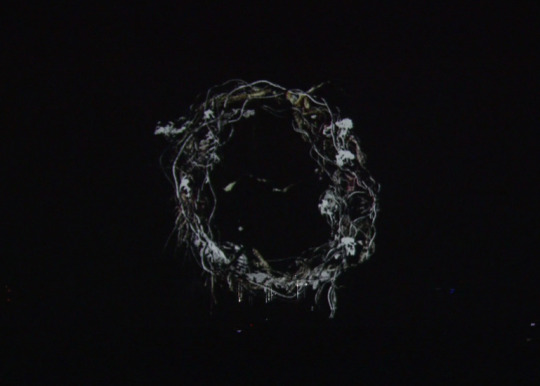
The nest symbolism is interesting. The main character on the Dogma cover is called Nesthead and there is a lot of time spent showing the forming of a nest during Coda live. Coda lyrics: "If I have to forget my true self in order to seize the whiteness, then give me blackness deeper than anything. Beneath this patch of sky, flowers cover the soil where corpses sleep. The beautiful deformity proceeds towards the dazzling darkness, the end and the beginning."
Nests could symbolize the concept of home or refuge, creating a secure place in the living darkness. In Buddhism, the idea of finding refuge in the Three Jewels (Buddha, Dharma, Sangha) is central. Just as a bird seeks safety and shelter in its nest, Buddhists seek refuge in the teachings of the Buddha, the Dharma (the path to awakening), and the Sangha (community). Nests, being temporary structures built by birds for the purpose of nurturing their young, can symbolize impermanence and the transient nature of existence. In Buddhist teachings, impermanence (anicca) is one of the Three Marks of Existence, highlighting the fundamental nature of all conditioned phenomena to arise and pass away. Reflecting on it teaches about the importance of non-attachment, letting go of clinging to things that are ultimately fleeting. Nests are created through the efforts of birds gathering materials and constructing them meticulously. This could symbolize the interconnectedness of all beings and the importance of cooperation and collaboration. In Buddhism, the concept of interdependence (pratityasamutpada) underscores the idea that all phenomena are interconnected and dependent on each other for their existence. Buddhism emphasizes living in harmony with nature and cultivating respect and reverence for all living beings.
I interpret the Nesthead herself as Ruki's Anima (in Jungian psychology Anima is what guides a man through the wilderness of collective unconscious). It's rather obvious Ruki identifies himself with her because of the similarity of poses, clothing and the gorgeous gold armlets they both wear.

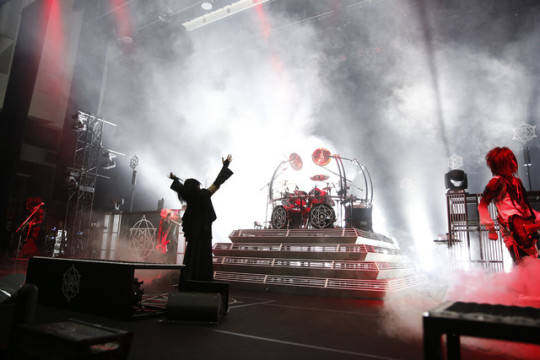
Moving on to the Dogmatic Final Live:

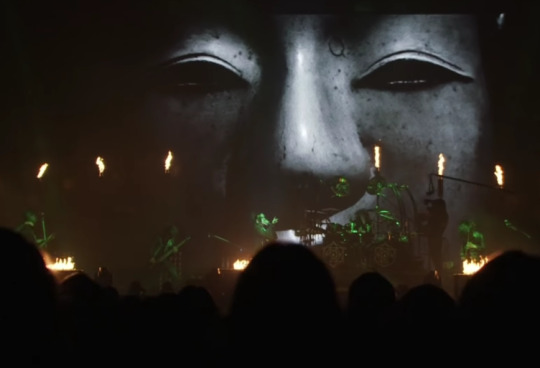
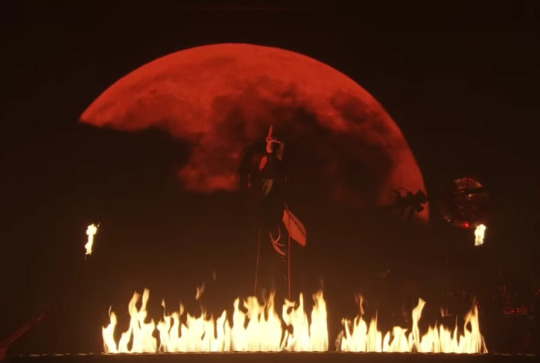

The Wasteland live visuals are very interesting. (Keep in mind it is played after Goddess and they had t-shirt merch saying "Goddess from the Wasteland").
Buddha is depicted headless which reminds me of the goddess Vajrayogini. Her severed head form (Ucheyma) represents the annihilation of the ego (remember the Dogma lyrics "I'll be a brain-dead god"?).
The many hands of the deity suggest it's ability to engage in multiple activities simultaneously for the benefit of sentient beings. This may include granting blessings, bestowing teachings, offering protection, and guiding others along the path. The Trishul (trident) represents the overcoming of the three poisons of ignorance, attachment, and aversion.
Vajrayogini is a personification of the cognitive function of the transformative power within consciousness. Her iconography symbolizes the transmutation of negative emotions and defilements into enlightened qualities, she is wisdom and compassion. She is associated with the transmission of esoteric teachings. Her color is blood red and her fire burns the Shadow. She is often depicted within a hexagram. Something that the GazettE also used during Sludgy Cult live:
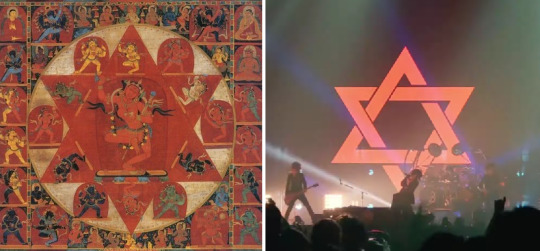
Moving on to NINTH:
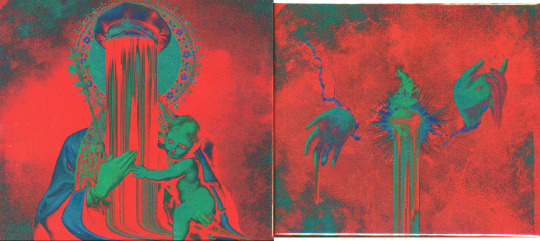
The Ninth cover is so fascinating because the veil makes me think of Binah, the pose and child makes me think of Mary & the Holy Ghost. But the scarlet colour screams Babalon.
Binah sephirah is the dark, receptive womb of creation, often associated with the color black, which symbolizes the hidden, formless potential from which all manifest reality emerges.
The veiled aspect of Binah is the concealment of divine mysteries and the incomprehensibility of the divine essence to human understanding. It suggests that the divine wisdom is veiled from ordinary perception and can only be understood through intuitive insight and spiritual revelation.
Babalon the Scarlet Woman in western esotericism is the Qabalistic path of Daleth (Translates to door, gate. This Path is the door by which the spirit enters the world. It is the third and final path to exist entirely above the Abyss (Da'at) in the realm of spirit). It is the path that connects Binah and Chokmah sephiroth (The 2 of them would be similar to Izanami and Izanagi in Shinto as the mother and father of all existence or Yin/Yang).
Daleth is also the Venusian Empress card in tarot. She is associated with fertility and pregnancy. Bab (as in Babalon or Babylon) in ancient Hebrew means Gate of God. This is the womb and Star Gate from which you are reborn as your true enlightened self (Rubedo/redness).
I always think Babylon's taboo is a reference to this. The "Ade due Damballa" chant repeated in that song is from Chucky and translates to: "Give me the power, I BEG OF YOU". I see it as asking Babalon to let you Cross the Abyss. However this is just my interpretation, the lyrics are quite obscure. But look at Ruki performing it live with the red laser to the heart. So reminiscent of the album cover art:




Moving on to MASS and Blinding Hope:

The doves. In Roman mythology, doves were sacred to Venus. The dove's association with Venus can symbolize the divine aspect of love, representing unconditional love, compassion, and harmony. In mystical traditions, love is often seen as a unifying force that connects all beings with the divine source.
Blinding Hope lyrics: "This darkness blinds out our eyes. Crying out for a change, we take all this hope and fight. Come back to the light"
Venus is linked with themes of transformation and renewal, particularly in her role as the Morning Star (lucifer or Lucy) heralding the dawn (coming out of the Abyss). The dove's symbolism of purity and renewal reflects the potential for spiritual rebirth and awakening.
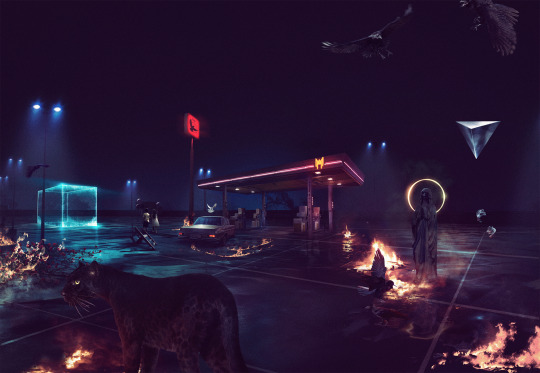
The Mass cover is a dream-like collage of imagery from the collective unconscious. Many unconscious parts have been integrated - I interpret the panther as tamed instincts. The fire is burning the Shadow. Death goddess is still there, but no longer a central figure, instead of holding a severed head, her hands are in prayer position. The work of contemplating Maranasati ("mindfulness of death" in Buddhism) is done. The cube is from the DIM cover but it's empty and clear unlike back then, when it had someone trapped inside. Lyrics from DIM scene: "We chase away the crows that gather around us. Their squawking cries ceasing, until every one of them has fled. Our utopia is so twisted and distorted that we have to sew it back together before it unravels".
The upside down pyramid is recurring image since the Magnificent Malformed tour, it is another depiction of the Feminine Yin and the subconscious.
Nox is the primordial goddess of the Night in Roman mythology. Nox lyrics: "Chased by silence. The drowning answers are always beautiful. What is left behind. Lamenting over common asuras".
(Common asuras suggest a broad existential/spiritual lamentation over the universal experience of grappling with desires, attachments, and the inherent suffering of existence.)
There is calm and serenity in the Mass cover image - compared to the storm and heaviness of Dogma. It's still Night but there is a lot of light. It is no longer crows surrounding our vehicle but the peaceful doves. (Although the crows are still there). All the pieces are gathered (the Shadow emotions are transmuted and the knowledge is acquired). Now we just need to finish the alchemical process. The gas station (with it's sign being the only scarlet red thing in the picture (the Red goddess is fueling our journey forward)) is the last stop before arriving at the destination.
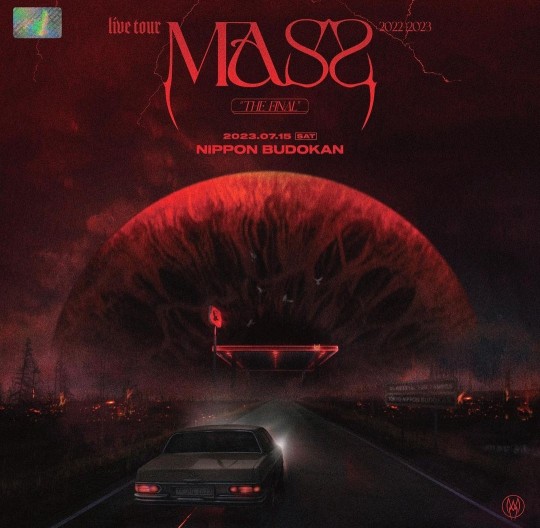
The red Mass Final poster makes me think of the path to Rubedo/Redness and the end of the individuation process. In Jung's words: "the Self...embraces ego-consciousness, shadow, anima, and collective unconscious in indeterminable extension. As a totality, the self is a coincidentia oppositorum; it is therefore bright and dark and yet neither"
Alchemy, individuation, enlightenment and crucifixion-rebirth of Christ ultimately mean the same thing.
The symbol of Self and the astrological Sun is a circle with a black dot in the center. The dot is the ego but the self encompasses it, as well as all the other elements, it is whole. The path towards this wholeness is a spiral.
Which brings me to Ruki's IG posts (some from as early as 2013):

(1) Spiral out - keep going. It's all individuation symbolism and alchemical colors. (2) Bowie was known for being really into Thelema, (where Babalon is the main goddess) especially during his most successful years. Ruki is a huge Bowie fan and has posted about him multiple times. Pic3 is from Black Moral Rad - again the Sun symbol in the center is for individuation, and at the bottom - The Sun and Moon are are opposites that need to be reunited. Pic4 is the Unkle - War Stories album cover. The most famous song on it is called Burn my Shadow, quite straightforwardly referring to Shadow as a Jungian term. (I really wanted to include these because I was listening a lot to both Bowie and this Unkle album during the time he was posting about them and the symbolism ties nicely to what I talked about earlier)
In the Mass tour final DVD teaser:

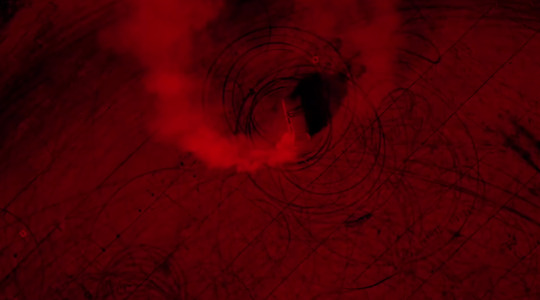
Pitch black night that we are moving through - doves heralding a new dawn - spiraling in Redness.
The Pale lyrics: "The dusk is disappearing, the shadow creaks in sorrow, until it disappears in my heart. The spinning night grows pale, as I embrace the meaning I’ve been looking for."
Both Ninth and Mass are a continuation of Dogma. We see Babalon for the 1st time in early Dogma era- on the 13th anniversary announcement. We see her hat from the Ninth cover on the 13th anniversary poster. The car and the panther from Mass cover 1st appeared during Ninth (the car in the Ninth limited edition book and the panther during the tour):

And finally the Mass Final DVD cover:

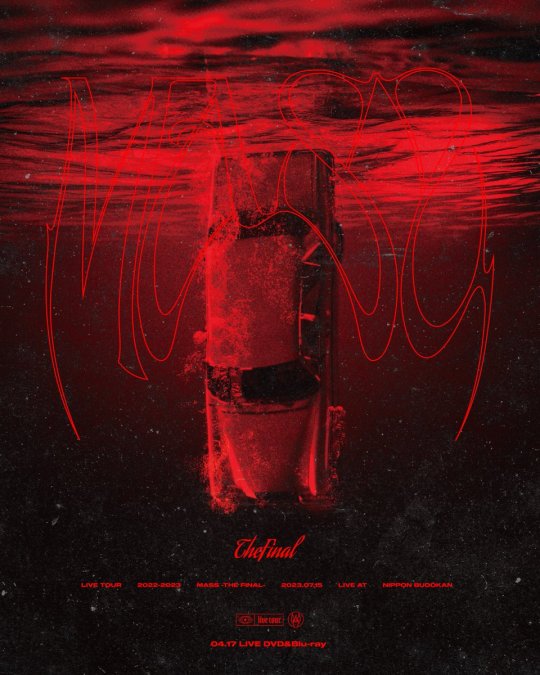
Pic 1 - A leap of faith. Releasing the need for control and surrendering to the divine, trusting the higher power. The circular red hue around the car and doves indicate the Goddess' presence. Water and sea represent the depths of the unconscious mind and its mysteries, as well as the interconnectedness of all life. The water where we are falling has a circular red spot which looks like the Japanese flag. The red in the Japanese flag is called "circle of the sun" so it's referencing both the journey to Self as well as foreshadowing the next album which we know will be heavily influenced by traditional Japanese culture. (They also had a huge Japanese flag during the live)
Falling lyrics: "To be reborn again, I’m gonna fall"
Pic 2 - Submersion, completion, coming back to the source. Boundary dissolution, merging of individual identity with the collective consciousness. Transformation, both spiritually and emotionally. A state of unity and integration is achieved. Rubedo signals alchemical success and the end of the Great Work. The way "TheFinal" is written looks like "TheEnd" at the end of a movie. And if we consider the Redefinition tour (2014) as the intro to Dogma (after all that's where Dogma documentary starts) - it has been a 10 year long journey leading up to this point of finality. Part 2
Part 3
65 notes
·
View notes
Text
I hope he take care of himself and be aware of how precious and loved he is... I'm so worried about him lately...😟🥺
2024.10.04 Ruki on Twitter:
"Noise so worthless, it’s not even worth spitting out. Endless, meaningless chatter. All that matters is staying true to myself. Neither you nor I are sweet enough to be easily deceived. #FRENZY"
Ruki: "Something I hadn’t been doing lately: taking care of myself.
I remind myself of my own value and the people who love me, trying to get through each day without being ruled by my emotions. It's practically a life-or-death struggle.
Time is limited. So, if both I and all of you can simply be happy today, that would be my greatest happiness."
Ruki: "This got kind of long, but just one more thing: I love you today too. #ToEveryone"
50 notes
·
View notes
Text
JEEZ FUCKING CRIST
I don’t normally post a picture from the TouMyu fansite random photo section but damn this one is just too good omg. how can a man be this beautiful.

I’ll take this down in a couple of days.
96 notes
·
View notes
Video
youtube
[Song Translation] The Brow Beat: “Suiren”
Ryuji (Vocalist)
Kado Shuntarou (Drums)
CHIROLYN (Bass)
Narukaze (Guitar)
The MV that is included with this post is a preview of the song. For more information on how to purchase the song, please refer to the links below.
To purchase the song from iTunes: HERE
To purchase the album “Hameln”, which includes the song: HERE
Please find the English translation of the lyrics for the song below the cut.
Continuar lendo
71 notes
·
View notes
Note
I notice something on your blog along with other Sato Ryuji tumblr sites. He most of the time has the same haircut but the color of his hair changes alot. How many times do you think he changes his hair color? Maybe each month he picks what color to do next. Do u think he does it alot. Also i seen pics of him along with his costars have on those white hospital mask on. Do you know why they do that? I always wondered that.
Ryuji does like to dye his hair, but his frequent hair colour changes are usually due to the necessities of the projects he participates in. As an example, these past few months, he’s dyed his hair black for The Brow Beat and brown for Ochanomizu Rock. He has also dyed his hair blond before, but we suspect (though unconfirmed) that his current light hair colour is due to the brown fading out xD
Actors wear the white face mask for different reasons. Sometimes, they wear it simply because they’re sick and don’t want to infect others with their germs, or when they’re in public and want to avoid being recognised. At other times, they wear it to hide their faces when they feel that they aren’t presentable for photo-taking, like when they’re sweaty and messy or just plain exhausted.
Ryuji, specifically, wears a mask most of the time to hide his face because he has a complex about how he looks and doesn’t feel that he’s good-looking enough for someone who works as an actor. In his photobook “Reach”, he actually commented on how the only thing he liked about his face was his eyebrows and that, “If [his] wish could be granted, [he] would like to have a face that looks visually cool (“kakkoii”).“
Thus, he fears disappointing the fans of the characters he plays with how different he looks in and out of character make-up, especially during the times when he feels that he isn’t presentable for photo-taking. And so, even when he isn’t wearing a mask, Ryuji can often be found covering his face with his hands in photographs.



Which is why you will find that his fans are often over the moon when he does take a photo where he isn’t hiding his face with a mask or his hand xD Because, no matter what the boy seems to think, he *is* gorgeous, in and out of character make-up ♥
#what?#hes literally the most handsome man I've ever seen#Sato Ryuji#Musical Touken Ranbu#Touken Ranbu#Live Spectacle Naruto#The Brow Beat#Somebody has to slap this fact into his face until he understands it: YOU'RE PERFECT RYUJIII
113 notes
·
View notes
Video
youtube
[FUN FACT] Sato Ryuji: His Visual Kei Origins

Main visual for The Brow Beat (above, left) and the cover for the album “Ragnarok” Limited Press Edition C (above, right)
In light of his band project, The Brow Beat, which is produced by HAKUEI, I thought it’d be nice to take a brief look at Sato Ryuji’s own visual kei origins (HAKUEI is a vocalist from the visual kei alternative rock band, PENICILLIN, and as can be seen in the “Black & Black” MV, The Brow Beat’s style leans heavily towards this genre).
Ryuji has always considered himself to be someone who comes from the visual kei genre.
(For information about visual kei, please refer to this link: HERE )
Before he made his official debut in the entertainment industry in 2011, Ryuji used to belong to a visual kei band called exZOIDO (ゾイド) where he was the drummer. A band from Sendai, they were active in 2010 (which would put Ryuji at 15 years old), but disbanded shortly after.

Ryuji’s profile picture from his time in exZOIDO (above, left) and his current look from The Brow Beat (above, right)
In 2013, Ryuji acted in the stage production “Present5″ where he had the opportunity to play Yamato Kyosuke, a member of a visual kei group that became an idol group.
youtube
Present5′s MV for “Sora ni Ochiru ~Chi no Ame to Muchi~”
(“Sora ni Ochiru ~Chi no Ame to Muchi~” as well as the rest of the songs for Present5 are available on iTunes: HERE and their album can be purchased from Amazon Japan: HERE )
And in 2017, Ryuji announced his new band project The Brow Beat. Taking on the name “Ryuji”, he is the lead vocalist in the band and has also written several songs for their first album “Ragnarok”.

Ryuji in the “Black & Black” MV (Credits: @sutekiyomitsu)

Ryuji in the “AIRISU” MV (Credits: @sutekiyomitsu)
He has also commented on his blog that his favourite singer is the GazettE, which is a visual kei rock band, and remarked that he was proud of the fact that he could play most of their songs on the drums (at the time that Ryuji wrote the entry, which is dated 12.11.2011, he had been playing the drums for five years). His favourite songs from the band include “ruthless deed”, “14 Sai no Knife”, “Sumire” and “Akai Kodou”.
For more information about The Brow Beat, please refer to this post: HERE
Source(s): ( x , x )
139 notes
·
View notes
Photo


[VIDEO] The Brow Beat: The Brow Beat Live Tour 2023 “The Five Senses” in CLUB CITTA’ (Kanagawa) dated May 09 and May 10, 2023
PERSONAL HIGHLIGHT
This is the first The Brow Beat live since the official lifting of COVID-19 restrictions, like bans on the audience responding verbally in their call and response, and it shows.
“The Five Senses” is also a live tour celebrating the band’s 5th anniversary, so it’s a very fun but also emotional ride. Both days had different setlists, and they sang songs from their first album all the way to their latest releases.
And, speaking of latest releases, they also sang the new songs from their 5th anniversary single, “LOVE LETTER” (which will be released on May 31, 2023). Both performances work as a set with the new songs being split between the two performances.
(And, the new songs are really something pfffft)
In conclusion, The Brow Beat is back and as wild and fun as ever, and I wish them a successful tour until the end (their final day is June 04, 2023)!
ARCHIVE STREAMING TIMES AND DATES
May 09, 2023
Archive: Until 23.59 (Japan time) on May 15, 2023
May 10, 2023
Archive: Until 23.59 (Japan time) on May 16, 2023
STREAMING TICKET INFORMATION
General Ticket (1 day): 3,500 yen
FC Ticket (2 days): 6,000 yen
NOTE: FC tickets are available for The Brow Beat FC members. To register for a membership, please refer to this link: HERE
To watch the streams, please refer to the links below.
General Ticket: HERE
FC Ticket: HERE
OTHER RELEASE INFORMATION
The Brow Beat’s 5th anniversary single, “LOVE LETTER”, is currently available for pre-order. For more information on how to pre-order the single, please refer to this link: HERE
NOTE: For more information about proxy services available in Japan, please refer to this link: HERE
To purchase tickets to attend The Brow Beat Live Tour 2023 “The Five Senses”, please refer to this link to the links below.
ePlus: HERE
Lawson Ticket: HERE
Ticket Pia: HERE
The Brow Beat Official Twitter Account: HERE
The Brow Beat Official FC: HERE
The Brow Beat on YouTube: HERE
The Brow Beat on TikTok: HERE
The Brow Beat on Spotify: HERE
The Brow Beat on Apple Music: HERE
Source(s): ( x , x )
8 notes
·
View notes
Photo


[NEWS] The Brow Beat: Online Live and Archive Streams for the Final Two Performances of The Brow Beat Live Tour 2023 “The Five Senses” have been Announced
LIVE AND ARCHIVE STREAM SCHEDULE
June 03, 2023
Live Stream: 18.00 (Japan time)
Archive: Until 23.59 (Japan time) on June 09, 2023
June 04, 2023
Live Stream: 17.00 (Japan time)
Archive: Until 23.59 (Japan time) on June 10, 2023
STREAMING TICKET INFORMATION
General Ticket (1 day): 3,500 yen
FC Ticket (2 days): 6,000 yen
NOTE: FC tickets are available for The Brow Beat FC members. To register for a membership, please refer to this link: HERE
To watch the streams, please refer to the links below.
General Ticket: HERE
FC Ticket: HERE
The Brow Beat Official Twitter Account: HERE
The Brow Beat Official FC: HERE
The Brow Beat on YouTube: HERE
The Brow Beat on TikTok: HERE
The Brow Beat on Spotify: HERE
The Brow Beat on Apple Music: HERE
Source(s): ( x , x , x )
4 notes
·
View notes
Text
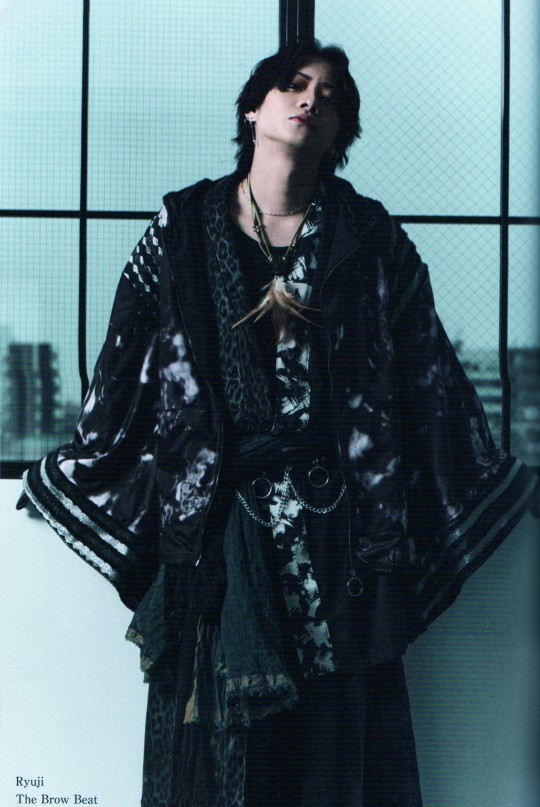





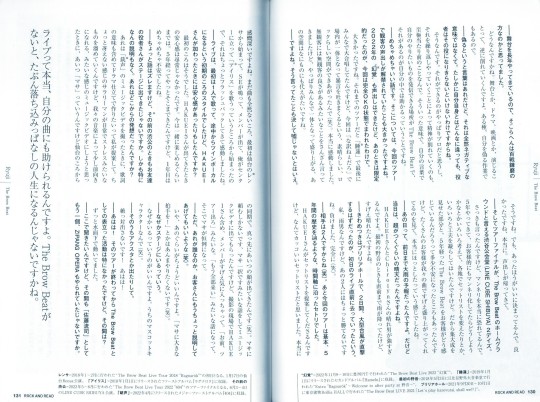
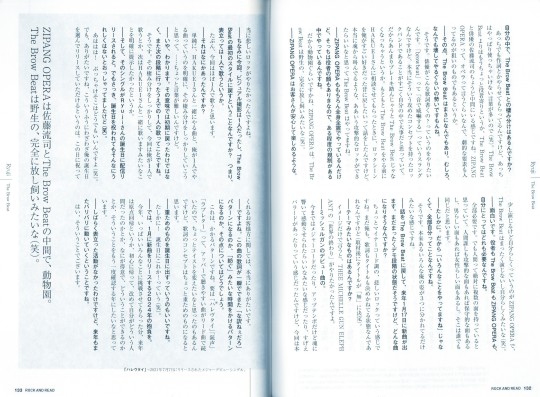
Ryuji von The Brow Beat
youtube
The Brow Beat 「銃声」 vö 04.04.2022
18 notes
·
View notes
Photo

“Ryuji is the person I’m closest to, so I think [it would be nice] if we are able to remain in such a relationship. The Paris performance was the first time I had seen his tears… Never [again] do I ever want to make him show that kind of expression/put that kind of expression on his face.”
By Kitazono Ryo (Kogitsunemaru) about Sato Ryuji (Kashuu Kiyomitsu) during the “Musical Touken Ranbu ~Atsukashiyama~ Paris”, NHK Weekly Stella No. 6/28
272 notes
·
View notes
Text


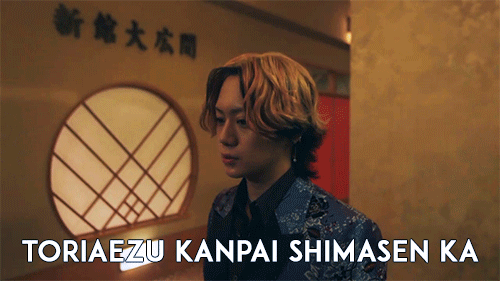

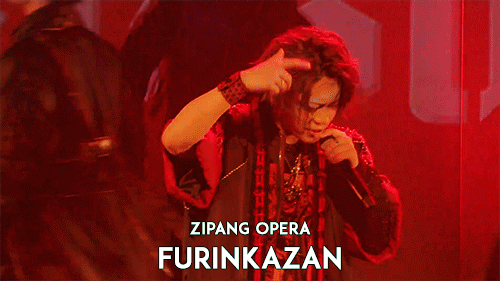
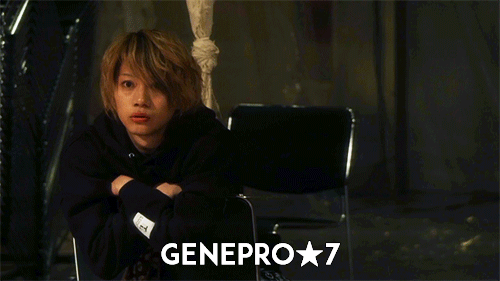
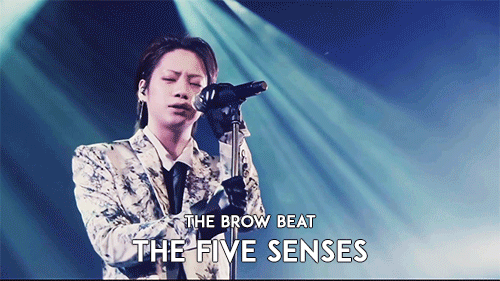

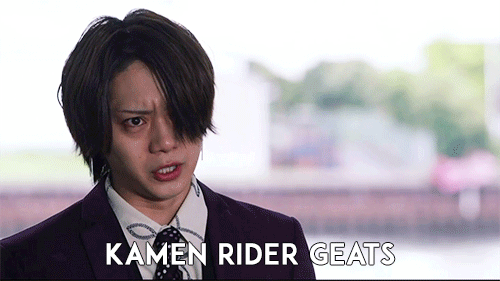
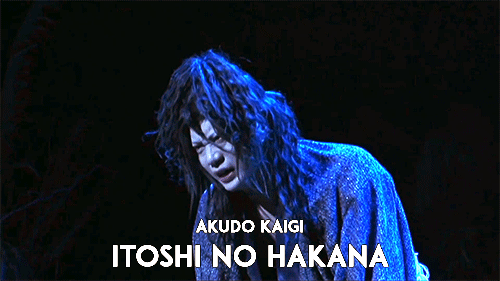


Sato Ryuji's Major Performances of 2023
Suzuki Kakeru in REAL⇔FAKE: Final Stage
Mozart in Onagku Geki 'Nigero' ~Mozart's Librettist Lorenzo Da Ponte~
Shinzo in Toriaezu Kanpai Shimasen Ka
Igarashi/Mitama Seiya in Castor & Pollux
Sato Ryuji in Zipang Opera: Furinkazan
Satsuki Asama (playing King Lear) in Genepro 7
Ryuji in The Brow Beat Live Tour: The Five Senses
Yoneda in Haru wa Mijikashi Koiseyo Danshi
Jitto / Kamen Rider Regard in Kamen Rider Geats
Kudan Suzujiro in Akudo Kaigi: Itoshi no Hakana
Uchiha Sasuke in Live Spectacle Naruto: Shinobi no Ikiru Michi
Itadori Yuji in Jujutsu Kaisen the Stage: Kyoto Sister-School Goodwill Event & the Origin of Obedience
35 notes
·
View notes










